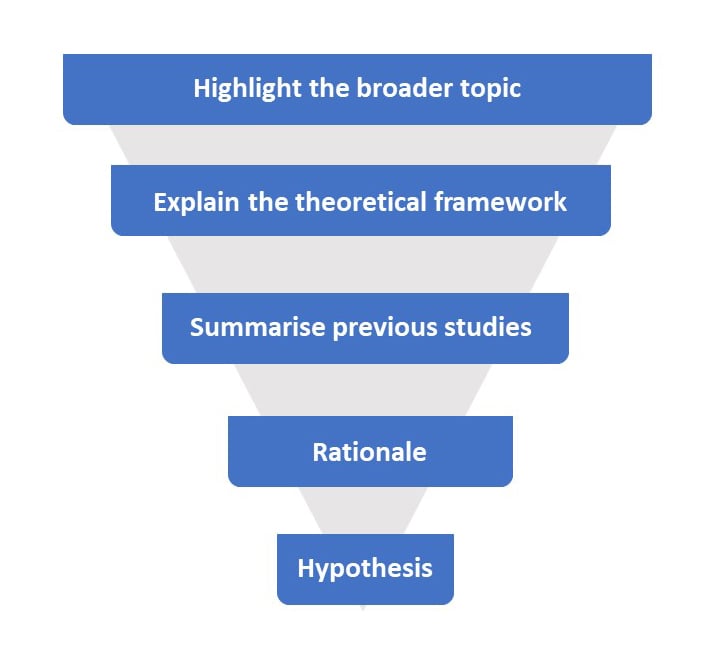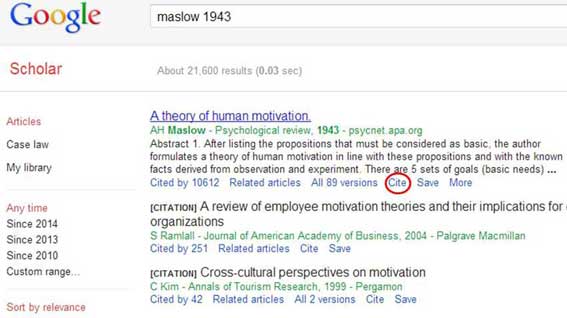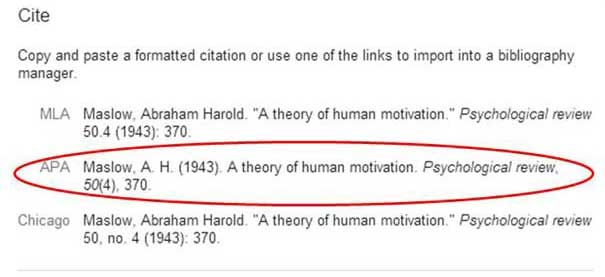In psychology, a research paper outlines a study’s objectives, methods, results, discussion, and conclusions, ensuring clarity and adherence to APA (or relevant) formatting guidelines.
A typical research paper (lab report) would include the following sections: title, abstract, introduction, method, results, and discussion.
The title page, abstract, references, and appendices are started on separate pages (subsections from the main body of the report are not). Use double-line spacing of text, font size 12, and include page numbers.
The report should have a thread of arguments linking the prediction in the introduction to the content of the discussion.
Title Page
This must indicate what the study is about. It must include the variables under investigation. It should not be written as a question.
Title pages should be formatted in APA style.
Abstract
The abstract provides a concise and comprehensive summary of a research report. Your style should be brief but not use note form. Look at examples in journal articles. It should aim to explain very briefly (about 150 words) the following:
- Start with a one/two sentence summary, providing the aim and rationale for the study.
- Describe participants and setting: who, when, where, how many, and what groups?
- Describe the method: what design, what experimental treatment, what questionnaires, surveys, or tests were used.
- Describe the major findings, including a mention of the statistics used and the significance levels, or simply one sentence summing up the outcome.
- The final sentence(s) outline the study’s “contribution to knowledge” within the literature. What does it all mean? Mention the implications of your findings if appropriate.
Advice
The abstract comes at the beginning of your report but is written at the end (as it summarises information from all the other sections of the report).
Introduction
The purpose of the introduction is to explain where your hypothesis comes from (i.e., it should provide a rationale for your research study).
Ideally, the introduction should have a funnel structure: Start broad and then become more specific. The aims should not appear out of thin air; the preceding review of psychological literature should lead logically into the aims and hypotheses.

- Start with general theory, briefly introducing the topic. Define the important key terms.
- Explain the theoretical framework.
- Summarise and synthesize previous studies – What was the purpose? Who were the participants? What did they do? What did they find? What do these results mean? How do the results relate to the theoretical framework?
- Rationale: How does the current study address a gap in the literature? Perhaps it overcomes a limitation of previous research.
- Aims and hypothesis. Write a paragraph explaining what you plan to investigate and make a clear and concise prediction regarding the results you expect to find.
Advice
There should be a logical progression of ideas that aids the flow of the report. This means the studies outlined should lead logically to your aims and hypotheses.
Do be concise and selective, and avoid the temptation to include anything in case it is relevant (i.e., don’t write a shopping list of studies).
Method
USE THE FOLLOWING SUBHEADINGS:
Participants
- How many participants were recruited?
- Say how you obtained your sample (e.g., opportunity sample).
- Give relevant demographic details (e.g., gender, ethnicity, age range, mean age, and standard deviation).
Design
- State the experimental design.
- What were the independent and dependent variables? Make sure the independent variable is labeled and name the different conditions/levels.
- For example, if gender is the independent variable label, then male and female are the levels/conditions/groups.
- How were the IV and DV operationalized?
- Identify any controls used, e.g., counterbalancing and control of extraneous variables.
Materials
- List all the materials and measures (e.g., what was the title of the questionnaire? Was it adapted from a study?).
- You do not need to include wholesale replication of materials – instead, include a ‘sensible’ (illustrate) level of detail. For example, give examples of questionnaire items.
- Include the reliability (e.g., alpha values) for the measure(s).
Procedure
- Describe the precise procedure you followed when conducting your research, i.e., exactly what you did.
- Describe in sufficient detail to allow for replication of findings.
- Be concise in your description and omit extraneous/trivial details, e.g., you don’t need to include details regarding instructions, debrief, record sheets, etc.
Advice
- Assume the reader has no knowledge of what you did and ensure that he/she can replicate (i.e., copy) your study exactly by what you write in this section.
- Write in the past tense.
- Don’t justify or explain in the Method (e.g., why you chose a particular sampling method); just report what you did.
- Only give enough detail for someone to replicate the experiment – be concise in your writing.
Results
- The results section of a paper usually presents descriptive statistics followed by inferential statistics.
- Report the means, standard deviations, and 95% confidence intervals (CIs) for each IV level. If you have four to 20 numbers to present, a well-presented table is best, APA style.
- Name the statistical test being used.
- Report appropriate statistics (e.g., t-scores, p values ).
- Report the magnitude (e.g., are the results significant or not?) as well
as the direction of the results (e.g., which group performed better?). - It is optional to report the effect size (this does not appear on the SPSS output).
Advice
- Avoid interpreting the results (save this for the discussion).
- Make sure the results are presented clearly and concisely. A table can be used to display descriptive statistics if this makes the data easier to understand.
- DO NOT include any raw data.
- Follow APA style.
Use APA Style
- Numbers reported to 2 d.p. (incl. 0 before the decimal if 1.00, e.g., “0.51”). The exceptions to this rule: Numbers which can never exceed 1.0 (e.g., p -values, r-values): report to 3 d.p. and do not include 0 before the decimal place, e.g., “.001”.
- Percentages and degrees of freedom: report as whole numbers.
- Statistical symbols that are not Greek letters should be italicized (e.g., M, SD, t, X 2
, F, p, d ). - Include spaces on either side of the equals sign.
- When reporting 95%, CIs (confidence intervals), upper and lower limits are given inside square brackets, e.g., “95% CI [73.37, 102.23]”
Discussion
- Outline your findings in plain English (avoid statistical jargon) and relate your results to your hypothesis, e.g., is it supported or rejected?
- Compare your results to background materials from the introduction section. Are your results similar or different? Discuss why/why not.
- How confident can we be in the results? Acknowledge limitations, but only if they can explain the result obtained. If the study has found a reliable effect, be very careful suggesting limitations as you are doubting your results. Unless you can think of any confounding variable that can explain the results instead of the IV, it would be advisable to leave the section out.
- Suggest constructive ways to improve your study if appropriate.
- What are the implications of your findings? Say what your findings mean for how people behave in the real world.
- Suggest an idea for further research triggered by your study, something in the same area but not simply an improved version of yours. Perhaps you could base this on a limitation of your study.
- Concluding paragraph – Finish with a statement of your findings and the key points of the discussion (e.g., interpretation and implications) in no more than 3 or 4 sentences.
Reference Page
The reference section lists all the sources cited in the essay (alphabetically). It is not a bibliography (a list of the books you used).
In simple terms, every time you refer to a psychologist’s name (and date), you need to reference the original source of information.
If you have been using textbooks this is easy as the references are usually at the back of the book and you can just copy them down. If you have been using websites then you may have a problem as they might not provide a reference section for you to copy.
References need to be set out APA style:
Books
Author, A. A. (year). Title of work. Location: Publisher.
Journal Articles
Author, A. A., Author, B. B., & Author, C. C. (year). Article title. Journal Title, volume number (issue number), page numbers
A simple way to write your reference section is to use Google scholar. Just type the name and date of the psychologist in the search box and click on the “cite” link.

Next, copy and paste the APA reference into the reference section of your essay.

Once again, remember that references need to be in alphabetical order according to surname.
Psychology Lab Report Example
Quantitative paper template
Quantitative professional paper template: Adapted from “Fake News, Fast and Slow: Deliberation Reduces Belief in False (but Not True) News Headlines,” by B. Bago, D. G. Rand, and G. Pennycook, 2020, Journal of Experimental Psychology: General, 149(8), pp. 1608–1613 (https://doi.org/10.1037/xge0000729). Copyright 2020 by the American Psychological Association.
Qualitative paper template
DownloadQualitative professional paper template: Adapted from “‘My Smartphone Is an Extension of Myself’: A Holistic Qualitative Exploration of the Impact of Using a Smartphone,” by L. J. Harkin and D. Kuss, 2020, Psychology of Popular Media, 10(1), pp. 28–38 (https://doi.org/10.1037/ppm0000278). Copyright 2020 by the American Psychological Association.

